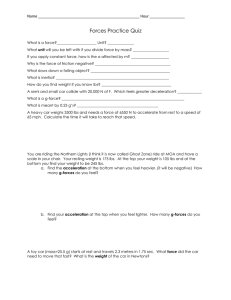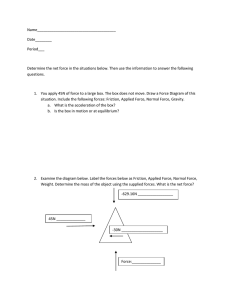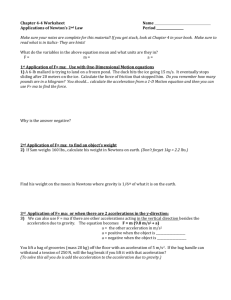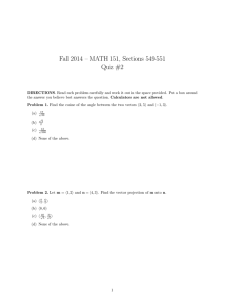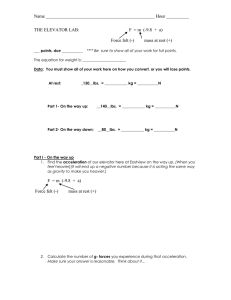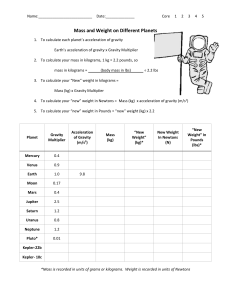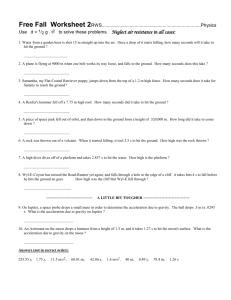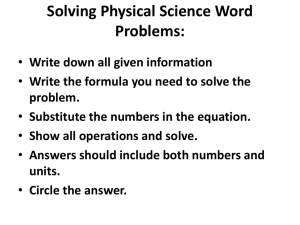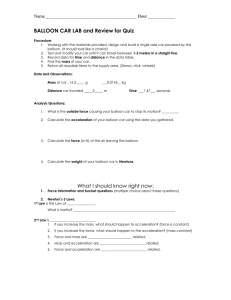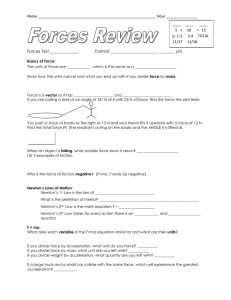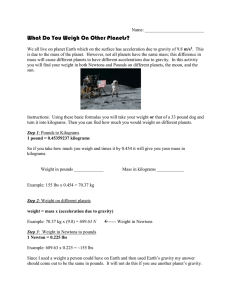Newton`s Second Law of Motion - Western Reserve Public Media
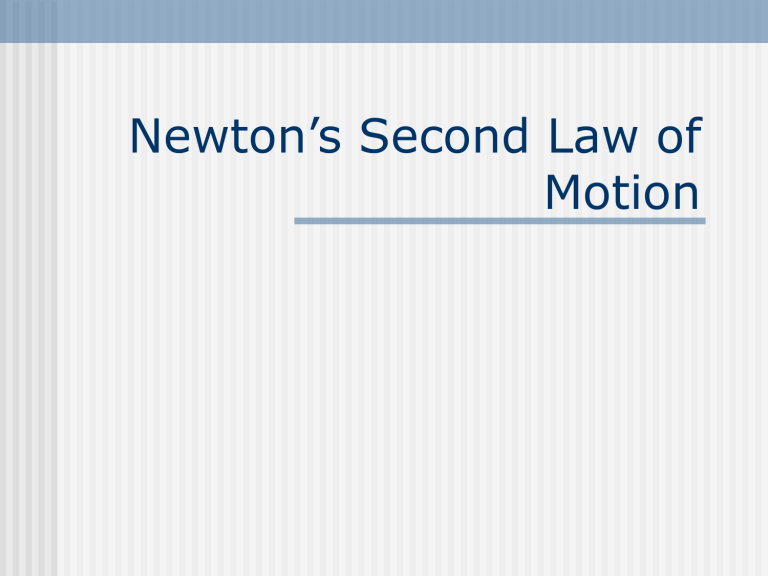
Newton’s Second Law of
Motion
And it states …
The acceleration of an object will be in the same direction and directly proportional to the net force applied.
The acceleration will be inversely proportional to the mass of the object.
So, the harder you push something, the faster it accelerates.
And the more massive an object, the harder it is to accelerate.
Back to mass, volume and weight
Mass is the amount of matter in an object (its inertia)
Volume is the size
Weight is the force of gravity on your body (mass and the acceleration due to gravity)
Don’t forget the difference between these!
Mathematically writing this law
F = m a (force = mass x acc.) units- ( N = kg x m/s 2 )
You may see this written as…
F = m a
(Greek letter sigma) means “the sum of” in math
So it means “net force”
So to calculate weight…
F = m a
F w
= m g g is still 9.8 m/s 2 sea level on Earth.
Metrically weight is always reported in newtons.
And don’t forget to keep your mass in kg.
Getting used to newtons
Calculate the weight of …
(ignore sig figs for a sec)
1 kg (2.2 lbs) =
20 kg (44 lbs) =
60 kg (132 lbs) =
80 kg (176 lbs) =
102 g =
9.8 N
196 N
588 N
784 N
1 N
Weight Problem
How much would a 68 kg person on
Earth weigh on the moon (g = 1.47 m/s 2 )? on Jupiter (g = 26.5 m/s 2 )?
100 N on the moon, 1800 N on
Jupiter
